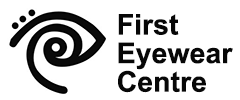What is tonometry?
Why a tonometry test is important to eye care?
The health of our vision changes as we age. Once we reach 40, it is not uncommon for eye problems to arise. Presbyopia, or age- related long-sightedness, is common even for people with prior perfect eyesight. Age may cause you to perceive as blurry objects at close range, so prescription reading eye glasses or multifocal eye glasses or contact lens may be needed to correct the problem.
Tonometry is an eye care procedure to measure the pressure inside our eyes, that is intra ocular pressure ( IOP ). Tonometry is an important test to help your optometrist to rule out any risk of eye disease, glaucoma.
Glaucoma, also known as “Silent thief of sight”, that results an increase in intra ocular pressure that causes a permanent vision loss. Our healthy eyes maintain unblocked watery fluid that flows between cornea and lens. Once fluid is blocked, pressure increases without any symptoms or signs, that can damage optic nerve and leads to blindness. Hence, tonometry is a critical test to detect early sign of glaucoma.
How does tonometry test work?
Air puff tonometry is an non invasive eye care instrument that blows a light puff of air at your cornea, measuring the intra ocular pressure ( IOP ). Your optometrist will advise other eye care diagnostic tests to confirm diagnosis if the results show a suspect of glaucoma.
Who needs to do tonometry test?
Your optometrist will advise for tonometry test if you:
- are 60 years old and above
- have a family history of glaucoma, diabetes and hypothyroidism
- have recent eye injuries
- myopia ( shortsightedness )
- are taking long term steroid medications
Your optometrist will advise for tonometry test if you have experienced:
- missing the peripheral vision. eg. not seeing the person sitting next to you
- seeing vision like looking through a door hole
- sudden eye pain
- constant blurry vision
- dispersed lights like “astigmatism”
- red eyes
What is the normal range of tonometry results?
According to the Glaucoma Research Foundation, the normal intra ocular pressure ( IOP ) range is 12 to 22 mm Hg, “millimeters of mercury,” which are the units used to record IOP results.
If the tonometry test comes back with a pressure reading exceeding 22 mmHg, you may have glaucoma or pre-glaucoma. Your optometrist will advise other eye care diagnostic tests to confirm diagnosis if the results show a suspect of glaucoma.
Tonometry test result can also show high pressure if you have had an eye injury, or if you have bleeding in the front of your eye caused by blood vessel problems, inflammation, or other eye care related issues.

